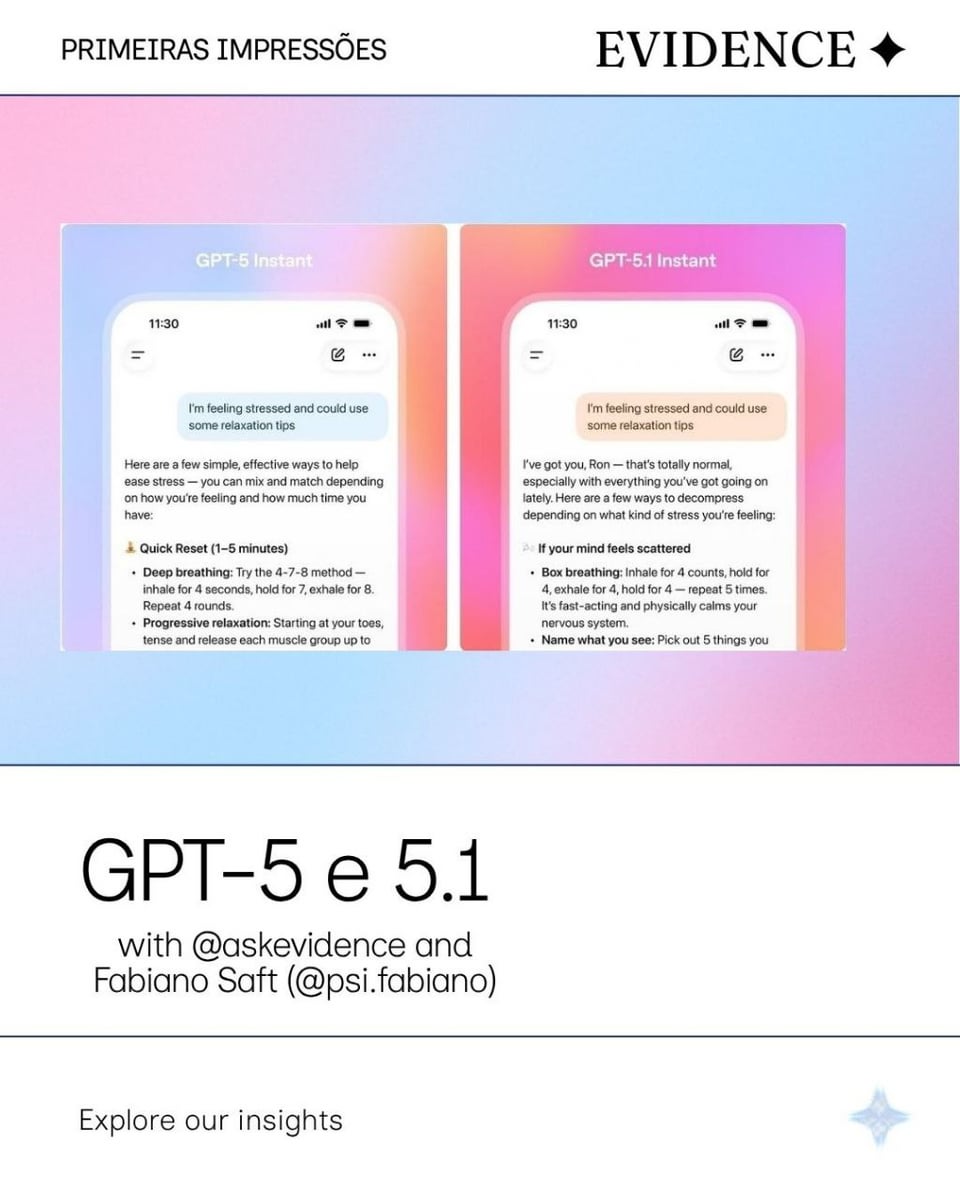
First Impressions of GPT-5 and GPT-5.1
There is a lot of noise around both versions, but what actually changed in real use is less about emotion and more about rhythm.
GPT-5 feels like a system trained to be extremely careful — precise, structured, almost formal in the way it delivers answers. Many users interpreted this as a kind of coldness, but it is more like a model that refuses to waste movement. It thinks in straight lines.
GPT-5.1, on the other hand, introduces a different layer: adaptive reasoning and a subtly warmer interaction style. It's not “friendlier” in a sentimental way — it simply understands context faster and follows your pace with fewer frictions. Less verbosity when you ask for clarity, more depth when the situation requires nuance.
For me, the most significant shift was this
the model doesn’t pretend intimacy, but it does understand intention.
It reads the speed of your thought, adjusts tone, and delivers answers that match what you meant, not only what you typed.
And this changes everything for those who use AI as a cognitive partner rather than emotional support.
The subtle improvements in GPT-5.1 create a sense of synchronization — a kind of mental alignment that makes the interaction feel smoother, more efficient, and more respectful of the user’s own reasoning style.
A Cultural Question
If GPT-5.1 can perform different tones — professional, candid, nerdy, cynical — then the real question is not technical:
**What model of humanity are we choosing to train and amplify?
And who gets left out of that design?**
Human–AI collaboration is not only about capability.
It’s about culture, ethics, and the narratives we decide to embed in our tools.
Explore our insights.
u/askevidence
